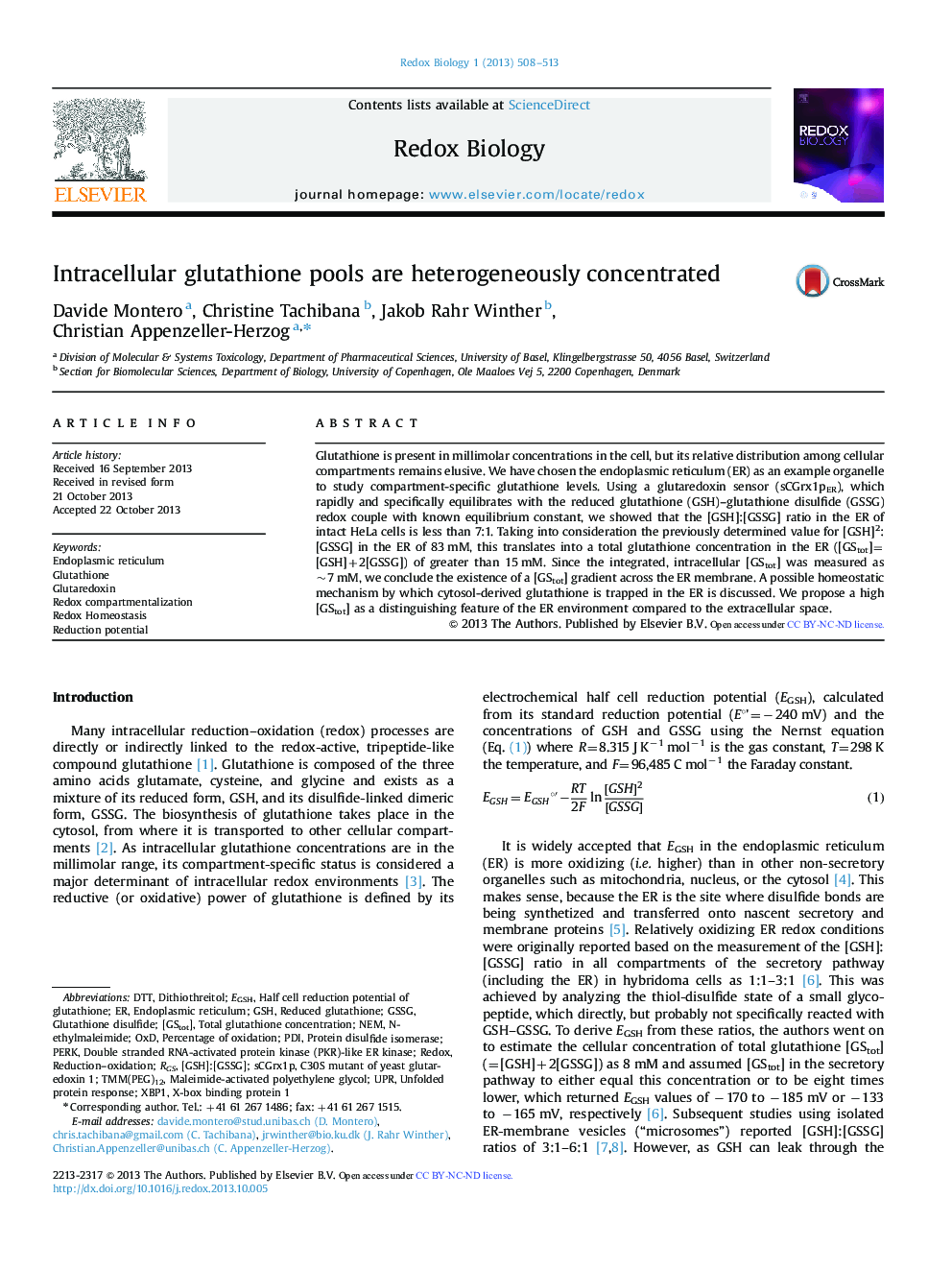| Article ID | Journal | Published Year | Pages | File Type |
|---|---|---|---|---|
| 1923268 | Redox Biology | 2013 | 6 Pages |
•Glutathionylation status of a 1-Cys glutaredoxin is a readout for [GSH]:[GSSG].•Compartment-specific [GStot] is given by [GSH]:[GSSG] and [GSH]2:[GSSG].•[GStot] is higher in the ER than in the cytosol of human cells.
Glutathione is present in millimolar concentrations in the cell, but its relative distribution among cellular compartments remains elusive. We have chosen the endoplasmic reticulum (ER) as an example organelle to study compartment-specific glutathione levels. Using a glutaredoxin sensor (sCGrx1pER), which rapidly and specifically equilibrates with the reduced glutathione (GSH)–glutathione disulfide (GSSG) redox couple with known equilibrium constant, we showed that the [GSH]:[GSSG] ratio in the ER of intact HeLa cells is less than 7:1. Taking into consideration the previously determined value for [GSH]2:[GSSG] in the ER of 83 mM, this translates into a total glutathione concentration in the ER ([GStot]=[GSH]+2[GSSG]) of greater than 15 mM. Since the integrated, intracellular [GStot] was measured as ~7 mM, we conclude the existence of a [GStot] gradient across the ER membrane. A possible homeostatic mechanism by which cytosol-derived glutathione is trapped in the ER is discussed. We propose a high [GStot] as a distinguishing feature of the ER environment compared to the extracellular space.
Graphical abstractFigure optionsDownload full-size imageDownload as PowerPoint slide
